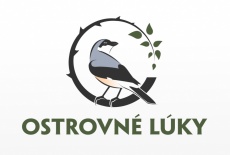Target species
Tawny Pipit (Anthus campestris)
An area of this species in the Western and Central Europe is islet, as it is bound to the sand dunes, dry grasslands, agricultural land and similar habitats. It prefers dry and warm habitats, open landscapes and sandy areas with sparse vegetation. In the 60´s the population of Tawny Pipit has dropped dramatically along with loss of suitable habitat due to land use changes (intensification of agriculture).
In Slovakia, the number of individuals of this species was estimated to be 70 to 150 breeding pairs, with the appearance mostly in lowlands of Podunajská nížina. Recent estimations of abundance within the SPA Ostrovné lúky are 5 pairs.

As nesting and breeding habitats requires Tawny Pipit an open space land overgrown with sparse grass and a small number of tree and shrub vegetation. Habitats with grass and herbaceous plant communities with spots of exposed soil surface are also suitable. In an environment of intensively farmed land Tawny Pipit uses edges of field roads overgrown with short grass and herbaceous vegetation as nesting habitats. Elevated places are used for patrolling, singing and hunting. In the past, the boundary stones of each farm, roadside stones and stone-walls were used for this purpose, however these were removed in the context of land consolidation.
In our climate conditions, the breeding takes place from mid-May to mid-July. Tawny Pipit builds its nest on the ground. It feeds almost exclusively on animal food, mainly beetles and ants.
Conservation status: The Birds Directive - Annex I; threatened; populations are stable in Slovakia.
Lesser Grey Shrike (Lanius minor)
Originally Lesser Grey Shrike is the species of dry grass habitats, inhabiting open country especially in the lowlands, which is very well adapted to life in cultivated agricultural areas. However, the condition for its occurrence in such an environment is the presence of trees for nesting of sufficient height and a not-excessive growths of grass (or agricultural crops), which are used for patrolling and prey-hunting. In Europe, it is therefore bound mainly to areas with intensive farming. During the 20th century West European populations have disappeared, except for a few remaining individuals surviving in small, isolated and highly fragmented populations.
In Slovakia, the number of breeding pairs is estimated at 600 to 800, however, this number represents only a fraction of the original population. In the SPA Ostrovné lúky their number is estimated at 5 to 10 breeding pairs.

The Lesser Grey Shrike inhabits a mosaic-like landscape with complex structured habitats (islets of fields and pastures, meadows, agricultural cooperatives, old orchards, edges of forests, vegetation belts with sufficient scattered tall trees). The rapid decline in abundance in the 20th century is associated with the intensification of agriculture and related changes in open countryside. In ideal conditions, this specie lives in open nesting colonies. It builds its nest relatively high (average of 8 meters above the ground).
It feeds on large species of insect - crickets, grasshoppers and beetles.
Conservation status: The Birds Directive - Annex I; vulnerable; significant population decline in Slovakia.
Red-footed Falcon (Falco vespertinus)
In the 20th century there was a significant decline in population due to changes in agricultural land (loss of nesting and feeding opportunities).
At the end of the 20th century, the abundance of this species was estimated to be 20 to 100 breeding pairs in Slovakia. In the past an average number of pairs in SPA Ostrovné lúky ranged from 4 -14.

Red-footed Falcon is an open-land species, which inhabits mainly dry grasslands, steppes and agricultural lowland areas with grasslands and pastures, while avoiding continuous forest cover. It usually uses lines of trees, windbreaks and bank vegetation for nesting and trees and other elevated places for patrolling while hunting the prey.
In optimal conditions the species nests in colonies of up to several dozen pairs. Red-footed Falcon, as well as other Falcon-species, prefers to use old nests of other species before building their own ones (nests of ravens, crows and magpies).
Since the species feeds mainly on large species of insects (grasshoppers, crickets, beetles), it is very sensitive to changes in an agricultural land. It also hunts small species of rodents and other vertebrates and also dragonflies near aquatic habitats.
Conservation status: The Birds Directive - Annex I; threatened; population trend in Slovakia fluctuating / significant decline.
















